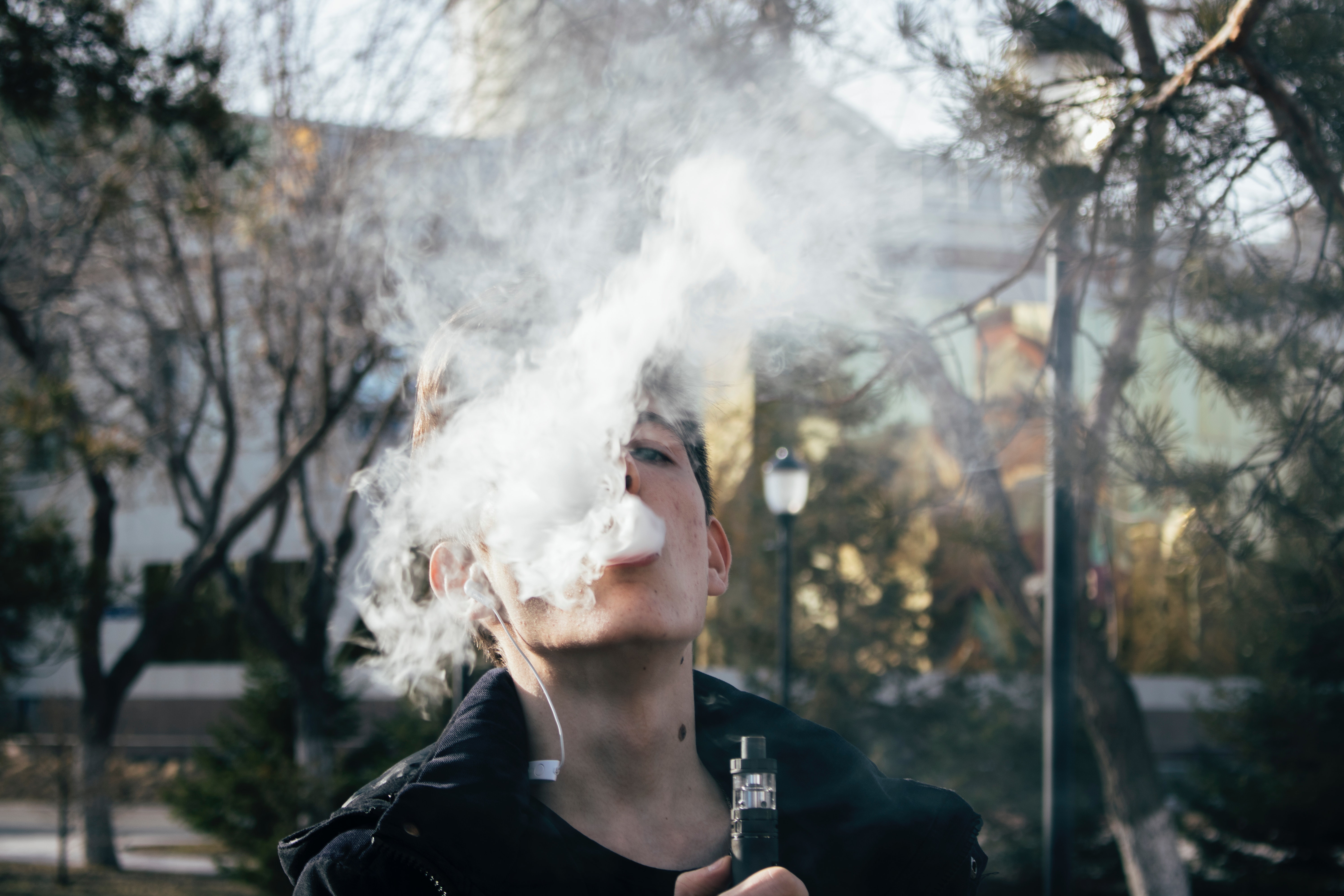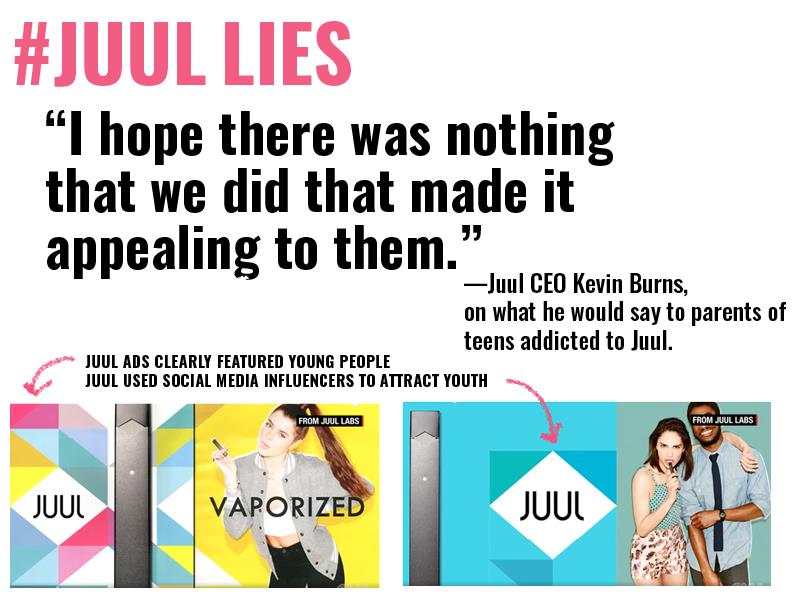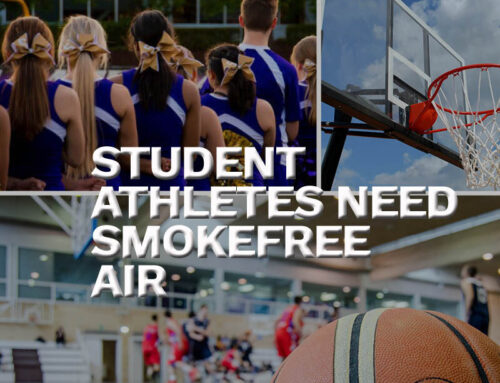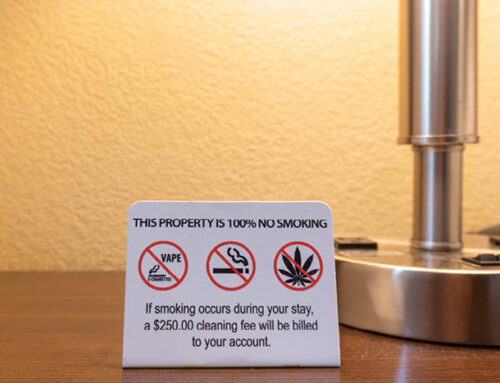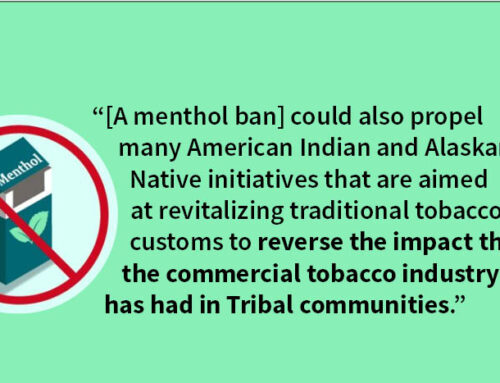A decade after the introduction of the e-cigarette, ANR reflects on the marketing, use, and health impacts of these nicotine products. Today we share Part 1 of this series, which focuses on the early days of e-cigarettes in the U.S. Future pieces will focus on Regulatory Landscape and Policy Guidance to protect public health. Part 2 is available here.
Flashback: What in the world is an e-cigarette?
Do you remember when you first heard or read about e-cigarettes or perhaps saw the product for the first time? ANR first learned about e-cigarettes when a member from Dallas called our offices in 2009/2010 asking if these products could be used in restaurants, which went smokefree years earlier in 2003. The individual using the device claimed it was allowed because it wasn’t a cigarette and it emitted a harmless ‘vapor mist.’ While we were unfamiliar with the specific product, we suggested that business owners could include these new devices, which looked like tobacco cigarettes, in the smokefree rule and to ask people to ‘take it outside.’ ANR felt that it was impossible to tell the difference between a combustible cigarette and the electronic smoking devices in a nightlife setting, making enforcement challenging if exemptions were made to allow these novel products to be used in smokefree spaces. Also, we felt that the secondhand aerosol emitted by these products could potentially be harmful to nonsmokers and shouldn’t be used inside shared air spaces where they could pose a health hazard to non-users. We strongly suggested then – and now – to take the precautionary approach, and to treat these new nicotine products like other forms of smoking when it comes to nonsmokers’ rights and developing strong smokefree protections.
Now We Know: The evidence is clear, e-cigarettes are not safe!
The science on the health effects of e-cigarettes on both the user and people exposed to the secondhand aerosol (‘vapor’) did not exist when these products hit the U.S. market, which created a void that the e-cigarette industry and proponents used to flood online platforms and legislators’ inboxes with messages about the presumed safety of these products—particularly for cigarette smokers who allegedly would switch from smoking to vaping. Today, there is now a rich science base that documents the hazardous constituents and particles in secondhand aerosol, the short-term health effects on those who vape, and the rapid rise of e-cigarette use among children and young adults.
Young people, many of whom never smoked a combustible cigarette given their knowledge about the harms of smoking and secondhand smoke exposure, started vaping nicotine products as a result of unregulated online advertisements of these novel high-tech devices that were touted as safe and healthy in the early days of e-cigarettes (2009-2010), and came in a variety of enticing flavors.
In February 2020, the Massachusetts Attorney General filed a lawsuit against JUUL Labs, asserting that the company was marketing its popular flavored vaping products to teenagers. Despite JUUL’s lies about not targeting teens, there is evidence that the company did target young people, including purchasing ad space on numerous youth-focused websites, such as Nickelodeon, the Cartoon Network, Seventeen magazine, and educational sites for middle school and high school students. This lawsuit presents strong evidence that the company was targeting young nonsmokers during its launch period from June 2015 through early 2016. On March 12, 2020, a law firm representing 23 California school districts, serving nearly 1.1 million students, filed a lawsuit against JUUL Labs Inc. for “its role in creating an e-cigarette epidemic and resurgence in youth nicotine addiction that impedes the educational and learning environment in schools across California.”
These marketing and interference tactics are reminiscent of early tobacco industry ‘prevention programs’ targeting youth and marketing and false claims that it never intentionally targeted children or other segments of the population by race, ethnicity, gender, socio-economic status, or sexual orientation.
Part 2: Regulatory Landscape will be published next Friday, April 3, 2020.
Previous Blog Posts on e-cigarettes:
https://no-smoke.org/clearing-the-air-on-the-vaping-crisis/
https://no-smoke.org/big-tobacco-and-juul/
https://nonsmokersrights.org/trump-administration-ecig-policy
For more information on electronic cigarettes, visit: https://no-smoke.org/smokefree-threats/electronic-cigarettes/

